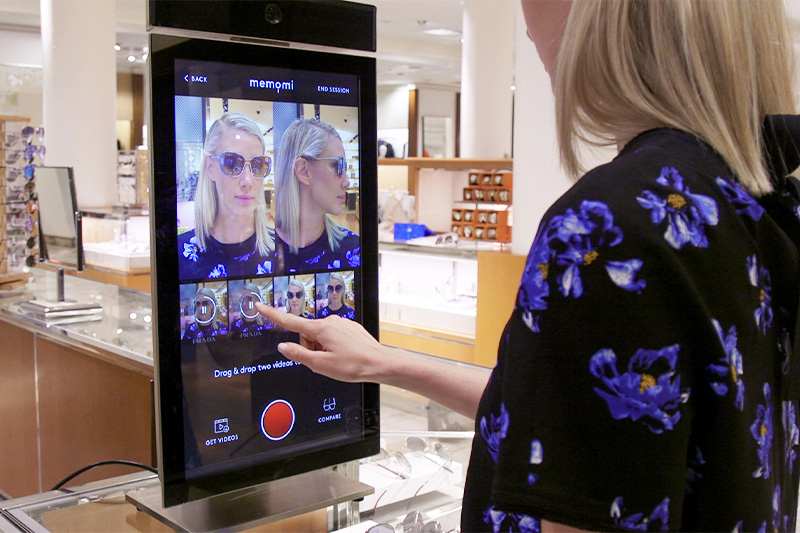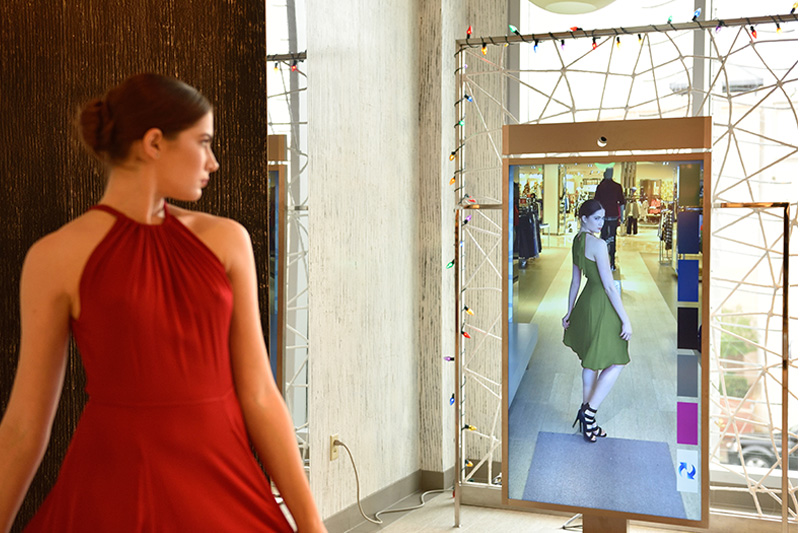Partnering with tech giants such as IBM, Intel and Adobe, and brands like Louis Vuitton, Neiman Marcus and Sephora, Salvador Nissi Vilcovsky is augmenting reality in the fashion realm with his advanced digital mirrors.
Imagine shrugging on that lovely velvet jacket – digitally – or cycling through a range of colour options for that dress with a single touch to find the optimal shade, and all in perfect lighting. Serial entrepreneur and MIT-graduate Salvador Nissi Vilcovsky is creating just such an intuitive shopping experience, transitioning seamlessly from concept to visualisation with his high-end digital mirror MemoMi. More than just a mirror, MemoMi has caught the eye of The New York Times, The Wall Street Journal, The Washington Post and Vogue Japan.

With offices in Silicon Valley’s Palo Alto, Paris and Tokyo, MemoMi Labs Inc. is equipping customers across the globe with the ability not only to try on garments virtually but also to record, replay and compare themselves wearing those outfits with different accessories, seeing themselves from every angle. “Mirrors have existed for centuries. What we’re doing is leveraging existing routines and using the digital mirror experience as a tool to engage with customers,” Salvador explains. The firm has since partnered with luxury brands such as Louis Vuitton, Neiman Marcus, Sephora, Estée Lauder, M.A.C. and L’Oreal and is continuing to heighten integration and develop cutting-edge software such as AI recommendation engines together with IBM, Intel, Corning and Adobe.
You might also like Is Brick and Mortar Dying? Design Collective Noise Noise Noise Doesn’t Think So.

With over 15 years in experience-based design and a fascination for technology, Salvador founded MemoMi in 2013 together with Ofer Saban, a long-time friend and expert in imaging processing and electro-optics. However, the inception of MemoMi actually began much earlier. “When I started with this idea, it was too early to create it because of limitations with the image processing power, the screens, and the cameras. So I just began with a portfolio of maybe 26 to 30 patents,” Salvador relates. “After a few years, everything just came together. The GPUs (graphics processing units) became much stronger and the screens were more available. It was just time to do it.”

Digital mirrors are opening up a myriad of new options for shoppers from switching instantly between colours and patterns to adding accessories virtually or sharing a video of your newest outfit with your friends. More than just an oversized screen with a camera, digital mirrors let you record real and virtual outfits and share them on social media or to your phone. It’s difficult to see the downside of a mirror that gives you perfect lighting every time, and industry experts are looking forward to the integration of VR in digital mirrors and digital imaging software. Salvador is quick to point out that MemoMi is not just for fashion. With trained algorithms in skin care, hair, eyewear, makeup, clothes and accessories, he explains, “We’re like a chameleon. We can create a new use case in a few weeks. We’re working with almost every makeup superbrand and we’re expanding all the time.” For now, the major hang-up remains how quickly retailers can adapt to this new medium and create 3D models for their products. Taking the fashion industry as an example, brands need to construct and provide MemoMi with 3D assets which the technology then digitally superimposes on customers for the software to be able to do its job.

With the evolution of digital imaging steaming ahead, Salvador anticipates the steady advancement of AI to assess and match customer needs to products. Together with Adobe, MemoMi is developing AI technology to feed their recommendation engine with classifiers such as a customer’s age, gender, skin tone and hair colour to generate a more accurate recommendation. “We’re trying to create a platform that can suit any use case for retail,” Salvador explains. “This year, we pushed the technologies a lot, but now we’re going to push more and more products – virtual eyewear, makeup, VR and AR.” The company is beginning to work with China, expanding to create a global network of partnerships. “Nobody knows the future,” he laughs, but the future is optimistic.
Related Articles
Tim Kobe Designed the First Apple Store. He Predicts Retail Future in Asia
K11 Musea: Is This USD 2.6 Billion Sustainability Mall Worth the Hype?
Plus Size Fashion: The Booming Retail Trend HK Is Missing Out On





